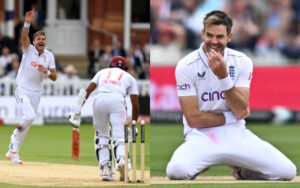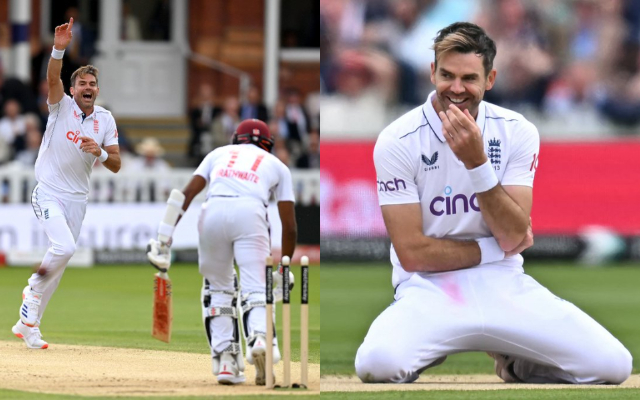
RevSportz Comment
Perhaps it’s just as well that so much of the focus at Lord’s was on the climax of Jimmy Anderson’s magnificent Test career. That deflected attention from just how pitiful West Indies were, skittled for 121 and 136 and lasting just 88.4 overs across the two innings. Their highest score, 31 not out, came from Gudakesh Motie, a bowler, and the match didn’t even go as far as lunch on the third day.
What was even worse was that there were no obvious villains, no scapegoats to point the finger at. This is the modern-day reality of West Indies cricket. There may be the very occasional rainbow – the victory at the Gabba earlier this year, and the one at Headingley in 2017 – but by and large, this is now a team that makes up the numbers at Test level. The days when a West Indies tour would have the host nation abuzz with excitement are long gone.
A cursory look at the numbers bears that out. Across the 1960s, ’70s and ’80s, when those of African descent began to truly assert themselves – both through books and speeches and on various playing fields – West Indies played 36 Tests in England. They won 21 of those, and lost just four. The unbeaten run between 1969 and 1991 included the famous ‘blackwash’ series of 1984. The great Ian Botham, for example, won just one of his 20 Tests against West Indies.
In the 21st century, West Indies have played 25 Tests in England, winning just three. There have been 19 losses. For years, poor administration was the culprit, with board presidents like Dave Cameron taking foolish steps and making idiotic pronouncements that destroyed player morale. But the current dispensation is doing what it can to revive cricket in the region. The infrastructure was spruced up for the recent T20 World Cup and those at the helm no longer treat the players as enemies.
But you can’t close your eyes to the economic reality of cricket in the Caribbean. The rewards are so skewed in favour of the shortest format that it’s almost an effort to scramble together a 15-man Test side. Shai Hope, one of the heroes of the Headingley win, hasn’t played a Test since 2021. Nicholas Pooran turns 29 in October, and is widely viewed as one of the best batters the Caribbean has produced in the last decade. He has never played a Test. Since first playing for Trinidad and Tobago more than 11 years ago, Pooran has played in five first-class matches.
For the Latest Sports News: Click Here

His white-ball resume includes 338 games, for more than 20 franchises around the world. There is almost no league that he hasn’t been part of. To put those numbers into perspective, consider Rishabh Pant. India’s first-choice wicketkeeper-batter plays in similar vein to Pooran and is two years younger. But despite missing a year and a half after a horror car crash, Pant has already played 33 Tests and 24 other first-class games. His resume includes one T20 franchise – the Delhi Capitals.
That is no criticism of Pooran, a young man out to do what’s best for him and his family. It is simply harsh economic reality. India’s cricket ecosystem is so flush with cash that Pant knows he doesn’t need to go looking for contracts. The average West Indies Test player doesn’t even take home what a Ranji Trophy star does.
India also learned from West Indies’ mistakes and put in place a robust structure that supports a conveyer belt of talent. “We took our eyes off the ball,” said Brian Lara, in a recent interview with The Guardian. “We had the best team in the world for 15, maybe 20 years. The rest of the world was learning from us. They understood the importance of fitness because we were the fittest team playing cricket in the 70s and 80s. They applied technology, tactical moves, formed academies to get their players up to standard.
“We continued on the way that natural ability is enough: the next Viv Richards is going to come around the corner, the next Curtly Ambrose is going to come around the corner. That’s not the case in today’s cricket. I still believe we have some of the best talents in the world but talent isn’t everything.”
It certainly isn’t, but it helps. For as long as it’s T20 cricket paying the bills though, don’t expect much of an upturn in the fortunes of those wearing the storied maroon cap. As Anderson said in one of his interviews on the eve of his final game, ‘Test cricket is hard work.’ Right now, that level of toil for scant rewards holds little appeal for those from the islands that once gave the game Sobers, Richards, the three Ws and the four pacemen of the Apocalypse.
Also Read: Cricketing Gods have final say in Anderson’s farewell Test




